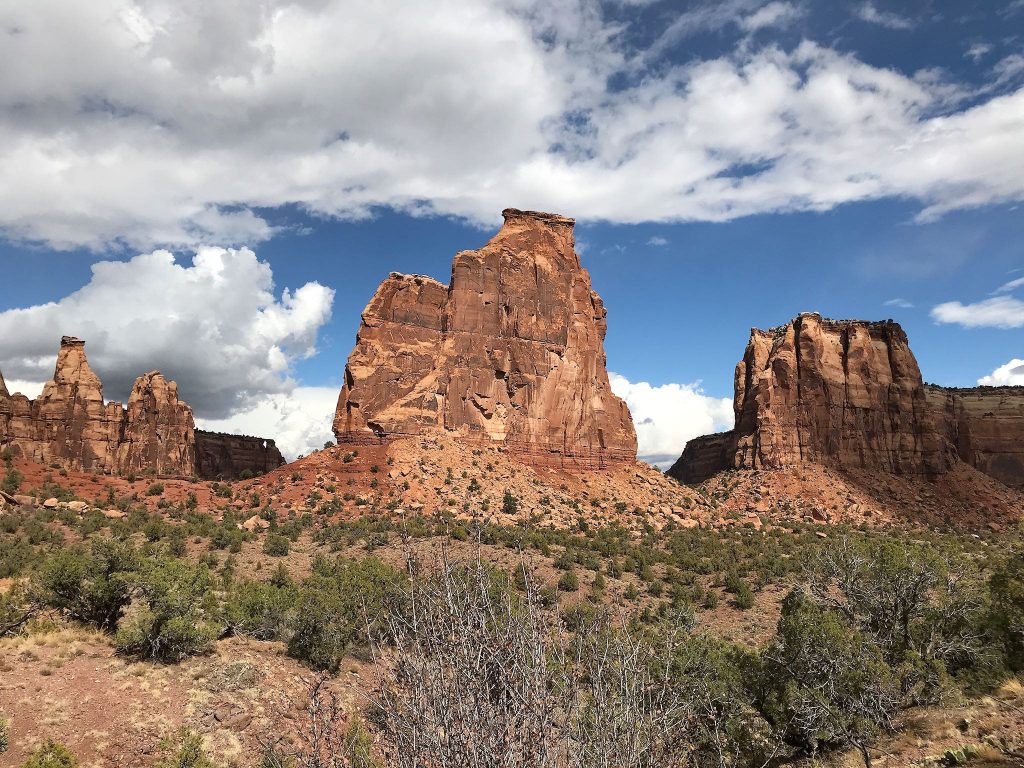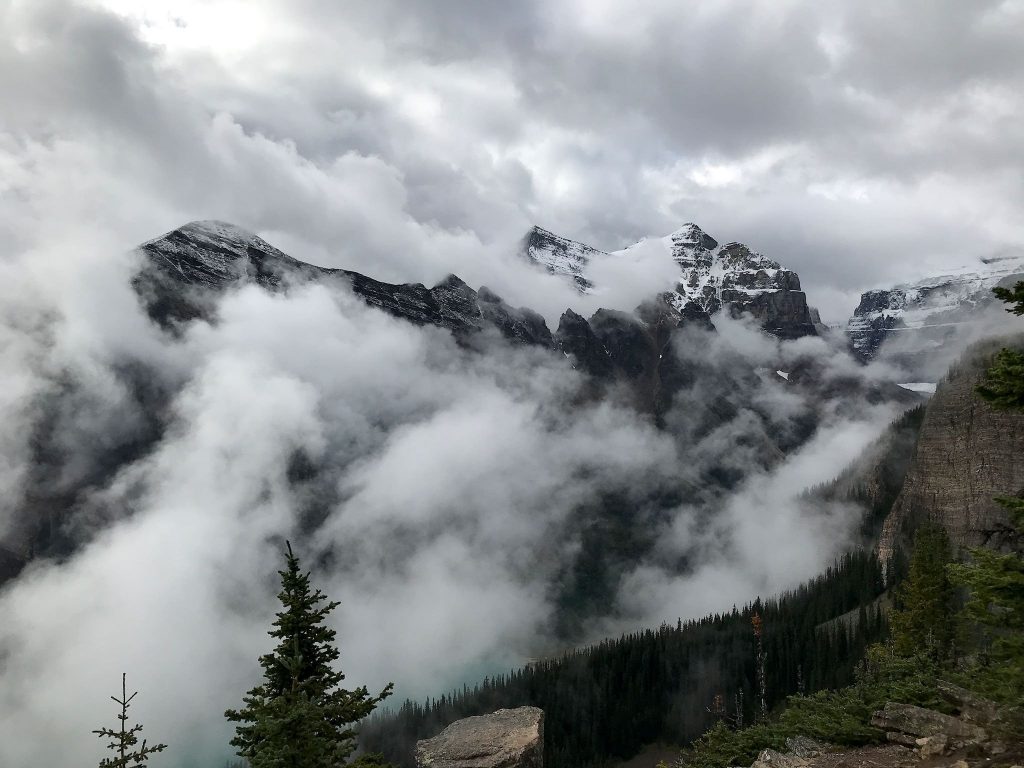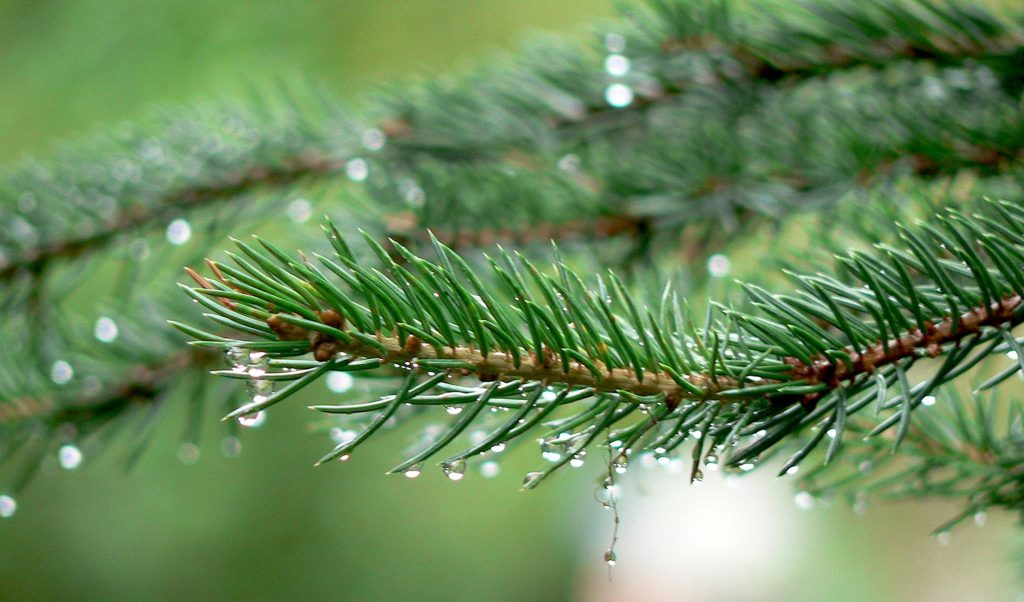Colorado National Monument is one of the coolest places in Colorado we’d never heard of. It was late afternoon when our Google-Maps-suggested route took us close to this green splotch on the map. Oh, look, the Monument has a campground – so we set a course. Wow!
Category: Hiking
Hiking, epic walks
Big Sky, MT – Reunion!
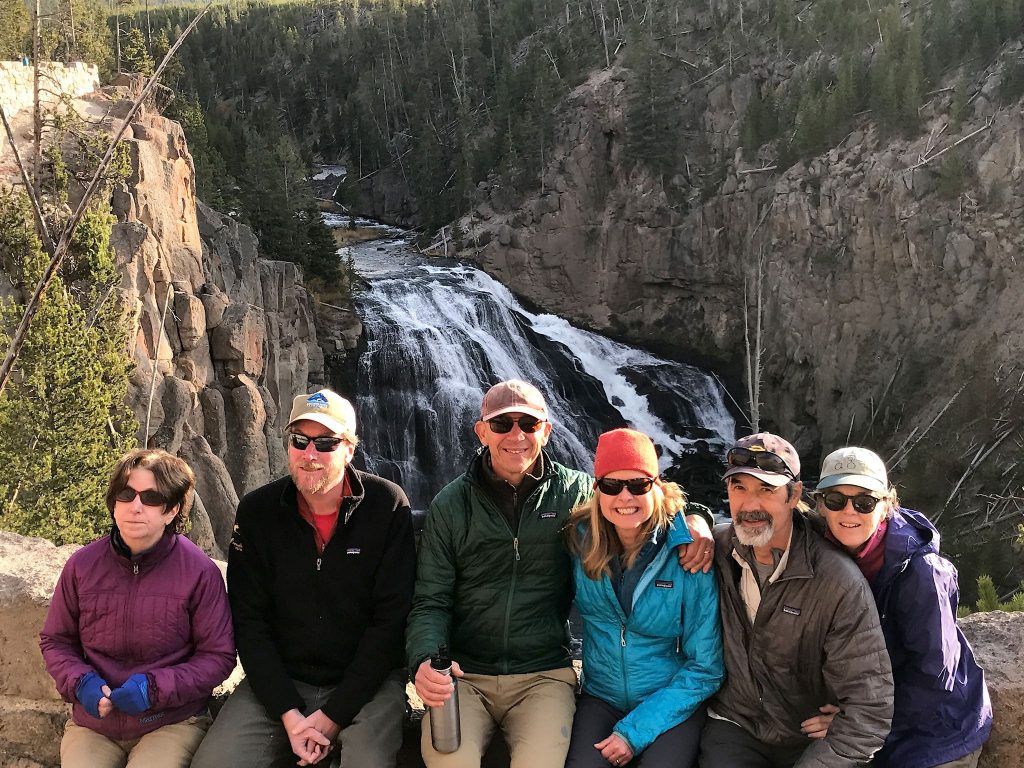
Back at the turn of the current century, 3 couples were trying to figure out how to move to Vermont and earn an income while living an outdoor oriented lifestyle – Dave and Sandra from eastern Massachusetts, Stan and Cyndee from the Berkshires in Massachusetts and Doug and me from Connecticut. We all met while skiing at Sugarbush and became fast friends – aka the 6-pack. We all achieved the goal and moved to the Mad River Valley between 2004 and 2006.
Fast forward 10 years and thoughts turned to retirement and coloring in the next chapter of our books. First Stan and Cyndee, then Dave and Sandra got hooked by the big mountain skiing at Big Sky, Montana and were gradually reeled in, ultimately moving to that delightful ski town. And Doug and I developed our current process for alternating Vermont skiing in the winter with these nomadic adventures in the summer. Sad to split the 6-pack? Yes. Fortunately, our respective retirement plans allow themselves to intersect from time to time. We’ve been out a couple of times in winter to ski, and twice now we’ve been able to stage our summer road trips to include a swing by this cool town, surrounded by mountains and National Parks – where our friends live.
Glacier (US) National Park
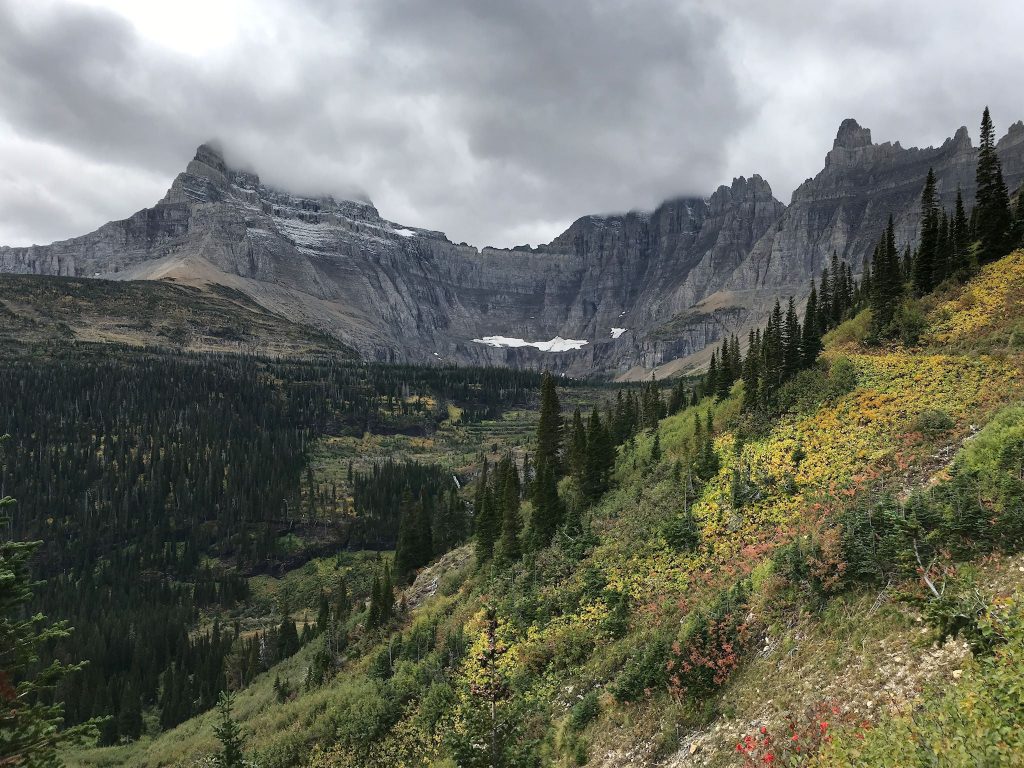
A mere 14 months ago, we were rejoicing over our time in Glacier (US) National Park as we explored the west side of the park from the Apgar/Lake McDonald area. (One month ago we were in Glacier (Canada) National Park – different place…) As with most of the places we’ve been, we left Glacier (US) (and Glacier (Canada), too!) with lists of things to see and trails to hike on future visits. As we crossed into the US from Waterton NP at Chief Mountain Port of Entry, we were conveniently positioned to visit the east side of Glacier NP. For no specific reason other than we had to pick one area, we headed for the Many Glacier area.
Waterton Lakes National Park
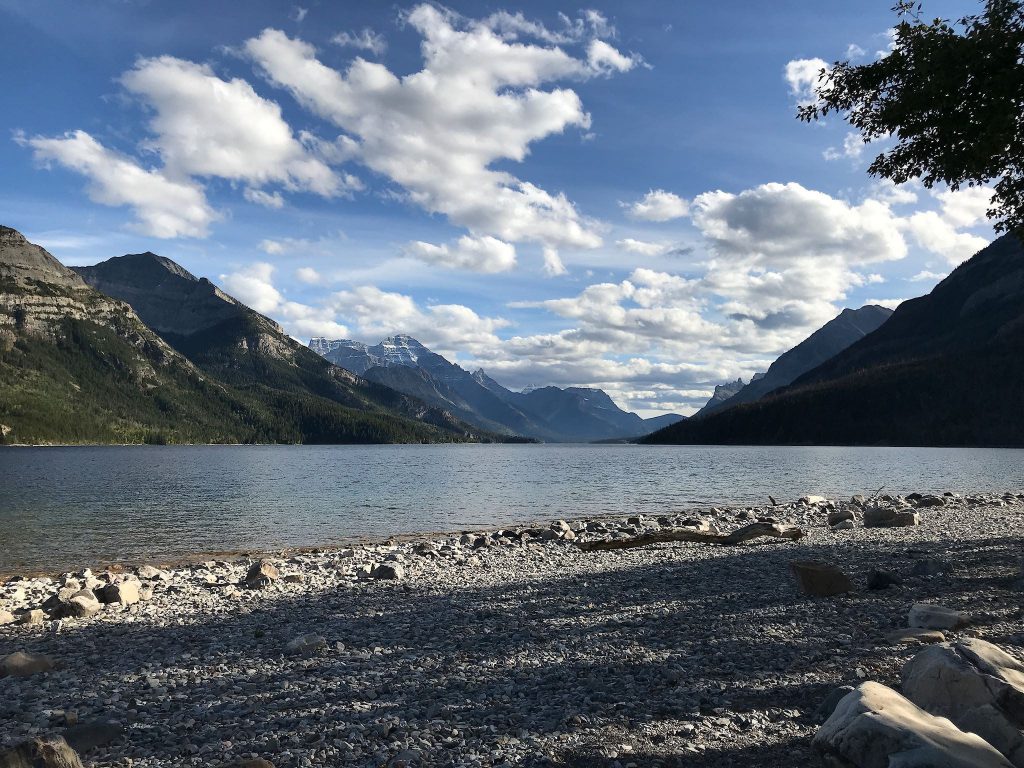
Waterton Lakes National Park is different from the other parks in the Canadian Rockies. It’s the smallest park in the Rockies, and the most diverse. Its motto is ‘where the mountains meet the prairies,’ a unique geology where the expected foothills just don’t exist. The park features the three Waterton Lakes – Lower, Middle and Upper – the latter being the deepest lake in the Canadian Rockies. Waterton is the only Canadian National Park to share a border with a US park – Glacier National Park. In 1932, the two parks were designated together to be the first International Peace Park, dedicated to peace and collaboration on preserving the unique ecosystem.
From our travels in the northwestern US last year, we were aware of the Kenow Fire that raged through Waterton National Park during September 2017, burning through nearly half of the park. The fire had played out and was considered ‘held’ exactly 1 year (to the day) before our arrival this fall. A year later, the entire west side of the park remains closed as crews continue to clear downed trees from roads and rebuild trails to restore safety for hikers and visitors. According to the park website, as we were preparing to leave Lake Louise, there was only one day hiking trail and one campground open.
We had decided to not visit Waterton on this trip, but due to some shifts in our timing and the weather, we changed our minds. So glad we did!
Banff National Park, part 2 – Lake Louise
Within the Canadian Rockies, the Lake Louise area is well known for its spectacular alpine scenery and hikes; those trails were emphatically calling us. The Lake Louise area is also well known for its crowds, so with eyes wide open, expectations adjusted, and our secret magic tricks for avoiding crowds in hand, we set a course.
Continue reading “Banff National Park, part 2 – Lake Louise”
Banff National Park, part 1 – Banff
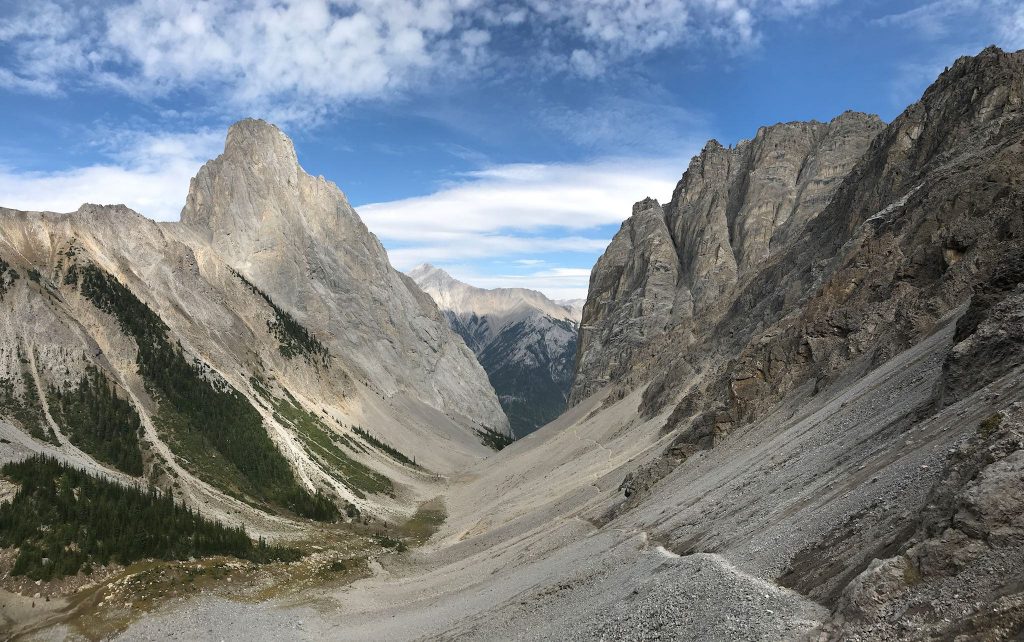
Banff National Park, established in 1885, is Canada’s oldest national park. Like the other parks in the area, the westward expansion of the Canadian Pacific Railway played a major role in Banff’s discovery and introduction to the world. The CPR built the historic Banff Springs Hotel (1888) and Chateau Lake Louise (1911) to entice wealthy patrons aboard their trains for vacations in the Rockies. Both of these luxury hotels (with many renovations), and the resort towns of Banff and Lake Louise that grew around them, continue to draw tourists from around the world in the 21st century.
Banff is not the largest park in the Canadian Rockies – that honor belongs to Jasper. However, it’s the most popular of the parks, and with good reason. Even more so than the other parks, the largest and most spectacular mountains are right there in your face, and for non-hikers there’s a range of other activities in the 2 towns. For us, the quantity and variety of day hikes we could choose from really made us smile – and the number of squeals per hike so far, in the southern part of the park nearest the town of Banff, forced us to extend our stay. So, here’s part 1…
Kootenay National Park
We’re not anti-social, we’re just not into crowds. We anticipated being in the Canadian Rockies in August (prime vacation season) and into September (including the Labor Day weekend), so we hauled out our box full of secret magic tricks. Based on our travels to date, we know the best days of the week and times of day to arrive at a non-reservable campground, how to find remote, lesser-known hiking trails on weekends, and, if we’d like to hike a popular trail, when to head out. As we were closing in on Banff National Park, the most popular of Canada’s parks and close to both Calgary and Edmonton, we decided to visit Kootenay National Park over Labor Day weekend.
Glacier (Canada) National Park
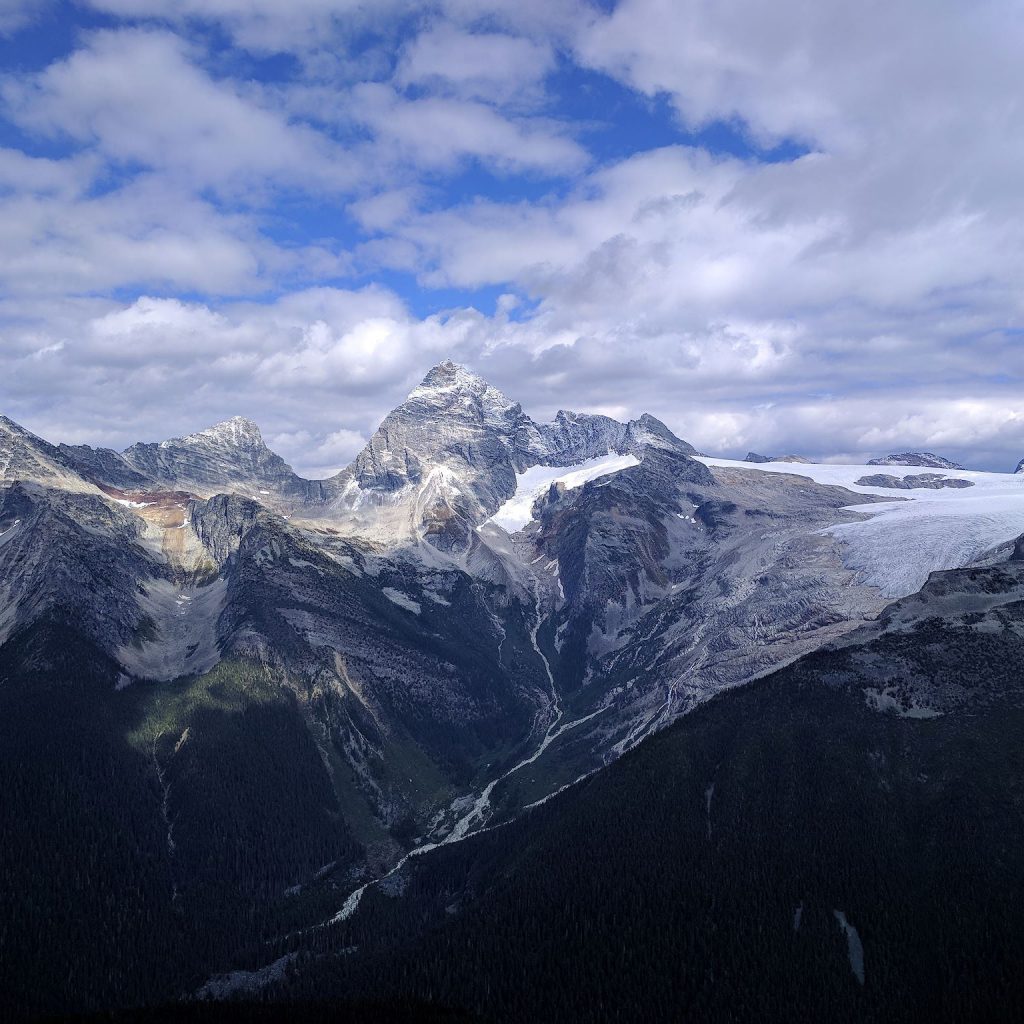
There are two Glacier National Parks in North America – one in Montana, US and one in British Columbia, Canada. They are about 550 km (340 miles) apart. To complicate things, Glacier (Canada) is in the Selkirk Mountains, close to (but not in) the Rocky Mountains, while Glacier (US) is in the Rockies, just south of the Canadian Rockies and connected to Waterton National Park (Canada) creating an international peace park. So when you talk about visiting Glacier National Park, many Canadians will ask ‘Which one?’ We’re in Glacier (Canada).
Glacier (Canada) had the name first – it was the second Canadian national park – established in 1886, while Glacier (US) was established in 1910. They both inspire awe. They both feature multiple, large, active glaciers, soaring mountains, waterfalls, black bears, grizzly bears and wildflowers. They both received early support from the countries’ respective transcontinental railroads. They both have avalanches in winter. However only Glacier (Canada) counts its epic avalanches as a major part of its history. To reduce confusion, Glacier (Canada) could rename itself Avalanche National Park. On second thought, that might not be good for tourism…
Continue reading “Glacier (Canada) National Park”
Revelstoke, BC/Mount Revelstoke National Park
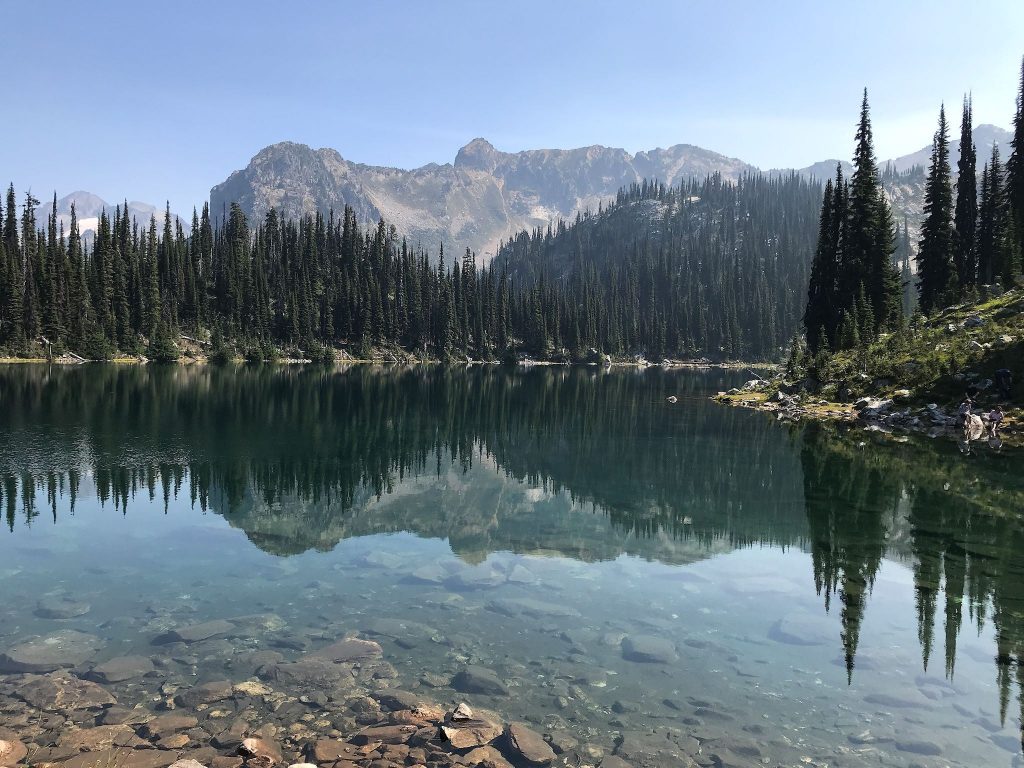
The grand concept for this trip was to make our way to the Canadian Rockies, visit (and hike!) the national parks there, and start making our way back. As Doug detailed in the two previous posts, we extended our westerly turn-around point to Penticton and added a music festival in Salmon Arm, both in BC. In addition to the five Rocky Mountain parks, we included the two national parks in the Selkirk range in our list, just a bit west of the Rocky Mountains in BC. The first of these is Mount Revelstoke National Park.
Continue reading “Revelstoke, BC/Mount Revelstoke National Park”
Yoho National Park
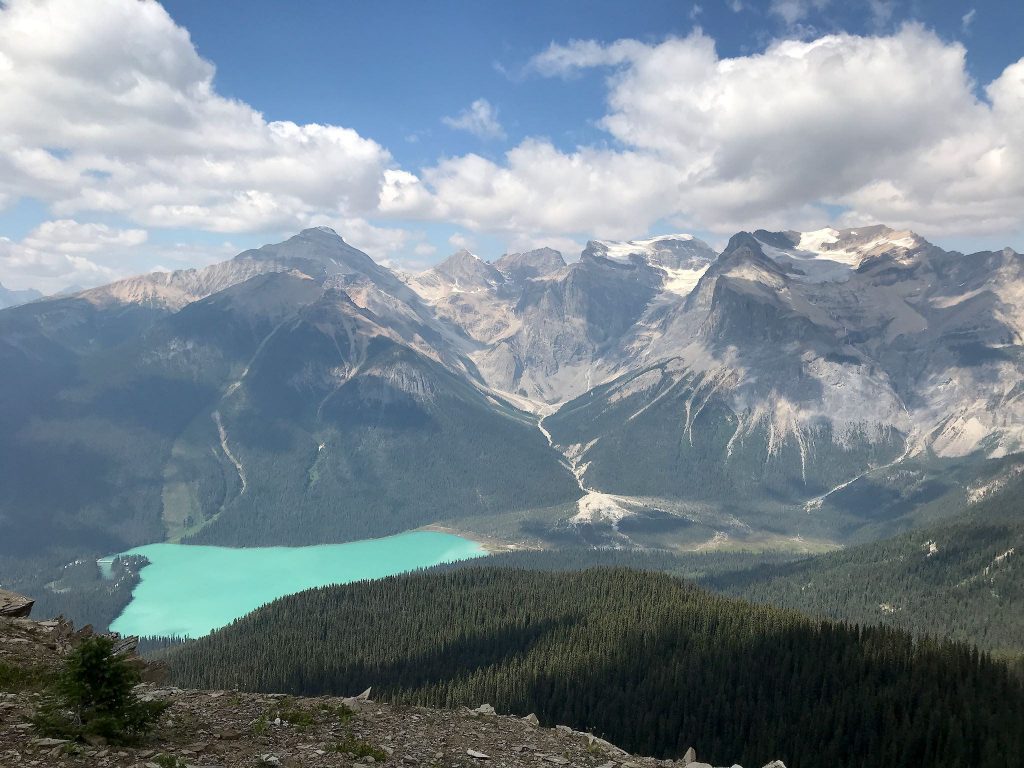
Though it doesn’t appear so at first, after being here for a week we realize that Yoho National Park, Canada’s second oldest park, has a split personality.
The discovery of Kicking Horse Pass, the first pass across the Canadian Rockies deemed ‘safe’ for the railroad in the 1850’s, put Yoho on the map. This discovery allowed Canadian Pacific Railway (CPR) to complete the transcontinental railroad. After numerous catastrophic train crashes, CPR reduced the grade through Kicking Horse Pass (aka ‘The Big Mountain’) with the use of the spiral tunnels, completed 1909. CPR also built the famed Canadian Pacific Hotels – beautiful lodges in gorgeous, remote places marketed to elite travelers in order to encourage more rail travel. Although no longer owned by the railroad, Emerald Lake, Yoho Valley, and Lake O’Hara Lodges in the park continue to provide luxurious accommodations in ‘we-are-but-specks-on-this-planet’ nature. (Italics from their brochures. And they really nail it.) Of course, where goes the CPR, now also goes the Trans-Canada Highway.
Away from the railroad, the highway, and the Kicking Horse Valley, Yoho is a hiker’s paradise. There are three super-steep, super-deep valleys in the park with towering, nearly vertical rocks walls, hidden glacial lakes and countless waterfalls. Accessible by paved roads, the end points of the valleys include lodging, tourist vistas and trailheads. Those end points are where the two Yoho personalities cross paths. Not far from these points, hikers leave the resort guests and tourist crowds on the shorter paved trails and head out for some of the best hiking we’ve experienced anywhere in our travels of North America. Thank you CPR.

